About
A Brief History
Between two hills, the Tor and Chalice Hill, in Glastonbury, Somerset, there is an ancient Spring that flows from the ground in the valley. This is the Chalice Well, sometimes called ‘The Blood Well’, whose waters constantly flow at 25,000 gallons per day (13650 litres) and at a constant temperature of 52 degrees Farenheit (11 degrees centigrade). The Spring has never been known to fail and in the dry years of 1921-22 it was the sole means of saving the whole town from drought.
It is called a chalybeate spring because of its rich iron content which colours the water red and leads to many of the adventurous myths that surround the Chalice Well site including that of Joseph of Arimathea visiting and burying the two cruets containing the blood and water from Christ’s wounds.
The Well today is surrounded by beautiful gardens in the Summerlands, where Tennyson wrote,
‘The island valley of Avalon, where falls not hail, or rain, or any snow.’ Water diviners and specialists have reported that the Spring has a ‘primary’ origin coming from deep within the earth. The dowser Sig Lonegren has dowsed many sites around the world and says, ‘The water doesn’t come from above. It comes from below and so is not dependent on rainfall and begins its existence deep within the bowels of our Mother, the Earth.’
The Well-shaft is approximately 3’5” x 3’5” and is constructed from large squared blocks of local lias. The total depth is 9 feet with the lower five and a half feet of the walls undisturbed while the blocks above this height have worn surfaces. One suggestion is that these upper stones are the remains of a corbelled roof. The walls of the shaft are bonded and fit very closely.
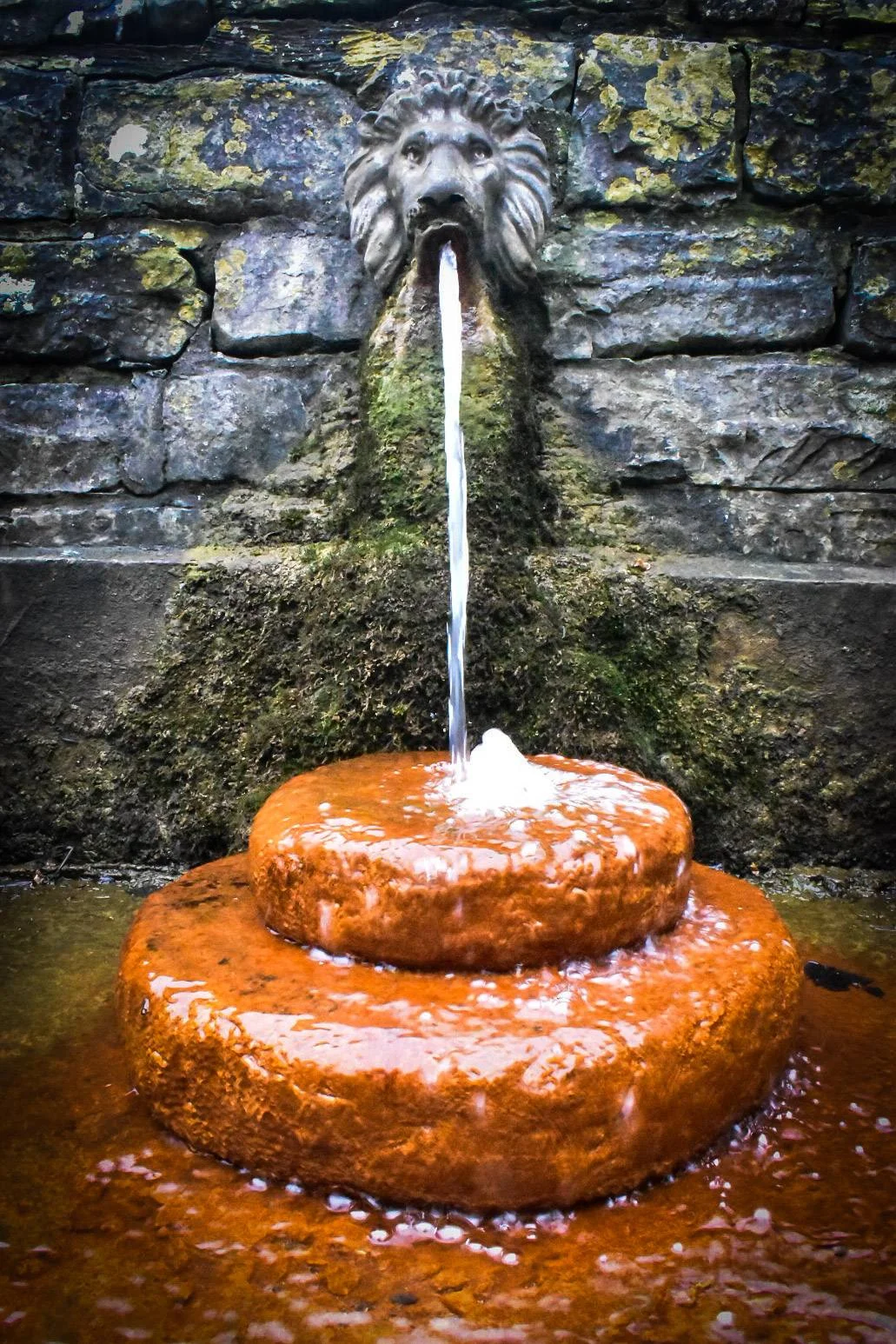
Between two hills, the Tor and Chalice Hill, in Glastonbury, Somerset, there is an ancient Spring that flows from the ground in the valley. This is the Chalice Well, sometimes called ‘The Blood Well’, whose waters constantly flow at 25,000 gallons per day (13650 litres) and at a constant temperature of 52 degrees Farenheit (11 degrees centigrade). The Spring has never been known to fail and in the dry years of 1921-22 it was the sole means of saving the whole town from drought.
It is called a chalybeate spring because of its rich iron content which colours the water red and leads to many of the adventurous myths that surround the Chalice Well site including that of Joseph of Arimathea visiting and burying the two cruets containing the blood and water from Christ’s wounds.
The Well today is surrounded by beautiful gardens in the Summerlands, where Tennyson wrote,
‘The island valley of Avalon, where falls not hail, or rain, or any snow.’ Water diviners and specialists have reported that the Spring has a ‘primary’ origin coming from deep within the earth. The dowser Sig Lonegren has dowsed many sites around the world and says, ‘The water doesn’t come from above. It comes from below and so is not dependent on rainfall and begins its existence deep within the bowels of our Mother, the Earth.’
The Well-shaft is approximately 3’5” x 3’5” and is constructed from large squared blocks of local lias. The total depth is 9 feet with the lower five and a half feet of the walls undisturbed while the blocks above this height have worn surfaces. One suggestion is that these upper stones are the remains of a corbelled roof. The walls of the shaft are bonded and fit very closely.
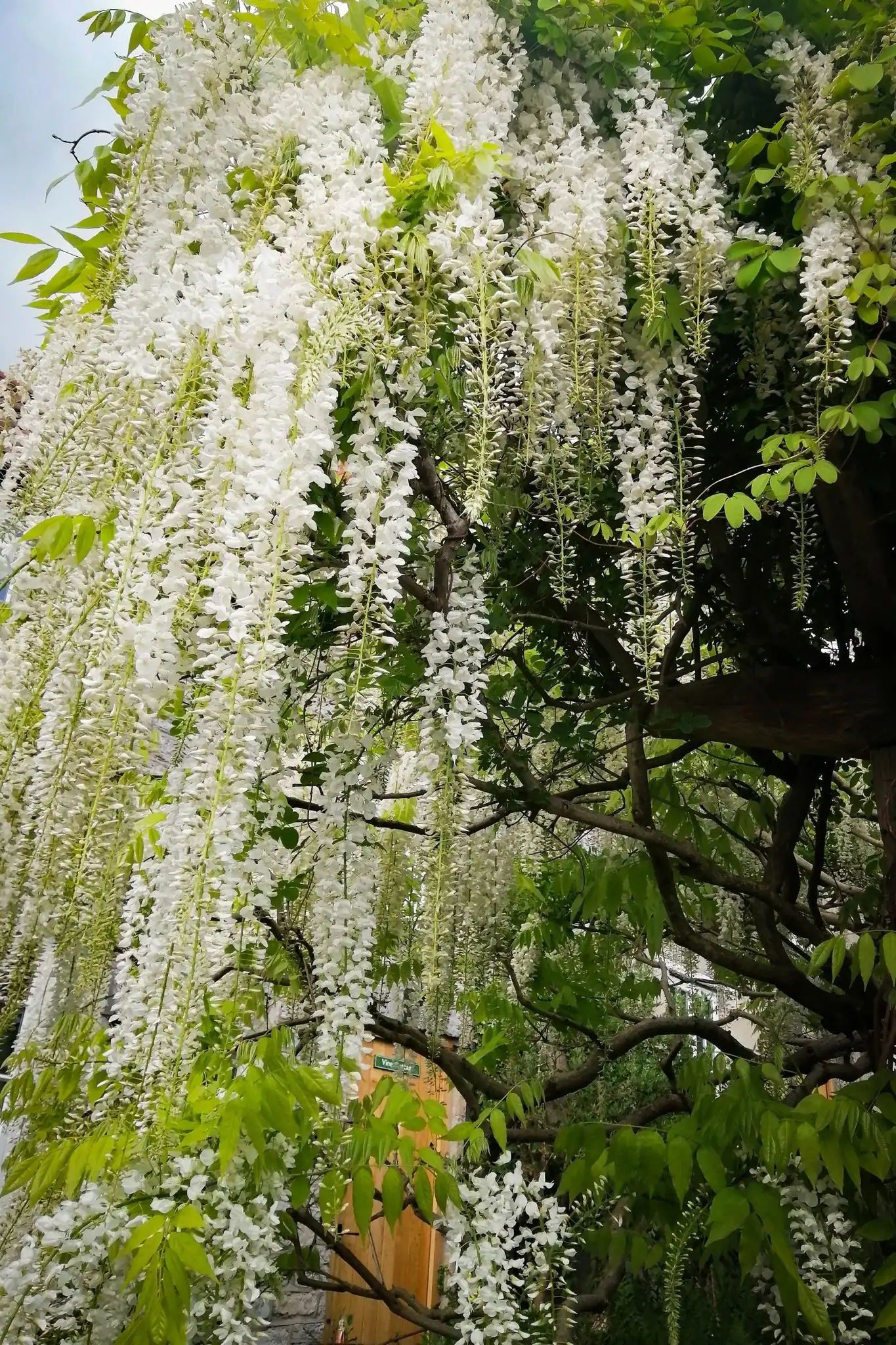
The archaeologist Dr. Raleigh Radford, upon examining the Well in the 1960’s considered the stones of the Well-shaft to be consistent with dates in the 12th century before 1184 AD or with a re-use of stones salvaged from the Abbey after the fire of that date. It was found that a water supply coming from Chalice Well was introduced into the new extensions of Glastonbury Abbey in about 1220 AD. Leading off the main shaft there is another space or ‘room’, often referred to as the inner chamber, which was probably constructed around 1750 with additions or alterations in 1820. This acted as a sedimentation tank to ensure a clean supply of water to the pilgrim’s healing pool in King Arthur’s Court which is possible to walk through. Interestingly the inner chamber is built to ancient measurements used by both Egyptian and early Christian builders.
‘There are certain geographical spots or centres where the veil is ‘thinner’ than elsewhere [that] are considered suitable for becoming spiritual and healing oases, through which Light can pass down into our human atmosphere more easily than is the case elsewhere. Such spots are nearly always situated near a spring, well or fresh running water. Chalice Well is once such centre and part of its heritage is to be able to act like a sounding board, ie whatever is thought or done there, it becomes magnified and can be carried further‘
~ Wellesley Tudor Pole
When the Trust founder Wellesley Tudor Pole employed Philip Rahtz to excavate near the Well in 1961 he not only found an ancient yew stump but also several dozen flints (upper Palaeolithic or Mesolithic) and a shard of Iron Age pottery alongside Roman and mediaeval shards suggesting human activity around the Well in antiquity.
The Well lid, the famous vesical piscis symbol of wrought iron and oak, was created by Bligh Bond at the invitation of Miss Alice Buckton in 1919. It was dedicated on All Saint’s Day in the presence of a group who represented all streams of spirituality, both East and West. The symbolism on the lid was designed after a thirteenth century pattern and according to Bond represents the Bleeding Lance and the Visible and Invisible Worlds interlocked with each other. The topside of the lid was fashioned by Bligh Bond and the underside by Hamish Miller at the millennium incorporating the old design with the sword tip bent over to create a heart shape.
As early as the 1770’s a survey map clearly shows the present Chilkwell Street named as Chalice Well Street, suggesting the Well was referred to by its ‘Chalice’ title a long time before the Missionaries of the Sacred Heart owned the site in the 1880’s or Alice Buckton purchased the Well and its surrounds in 1913 or Tudor Pole secured the site for posterity by creating the Chalice Well Trust in 1959.
The archaeologist Dr. Raleigh Radford, upon examining the Well in the 1960’s considered the stones of the Well-shaft to be consistent with dates in the 12th century before 1184 AD or with a re-use of stones salvaged from the Abbey after the fire of that date. It was found that a water supply coming from Chalice Well was introduced into the new extensions of Glastonbury Abbey in about 1220 AD. Leading off the main shaft there is another space or ‘room’, often referred to as the inner chamber, which was probably constructed around 1750 with additions or alterations in 1820. This acted as a sedimentation tank to ensure a clean supply of water to the pilgrim’s healing pool in King Arthur’s Court which is possible to walk through. Interestingly the inner chamber is built to ancient measurements used by both Egyptian and early Christian builders.
‘There are certain geographical spots or centres where the veil is ‘thinner’ than elsewhere [that] are considered suitable for becoming spiritual and healing oases, through which Light can pass down into our human atmosphere more easily than is the case elsewhere. Such spots are nearly always situated near a spring, well or fresh running water. Chalice Well is once such centre and part of its heritage is to be able to act like a sounding board, ie whatever is thought or done there, it becomes magnified and can be carried further‘
~ Wellesley Tudor Pole
When the Trust founder Wellesley Tudor Pole employed Philip Rahtz to excavate near the Well in 1961 he not only found an ancient yew stump but also several dozen flints (upper Palaeolithic or Mesolithic) and a shard of Iron Age pottery alongside Roman and mediaeval shards suggesting human activity around the Well in antiquity.
The Well lid, the famous vesical piscis symbol of wrought iron and oak, was created by Bligh Bond at the invitation of Miss Alice Buckton in 1919. It was dedicated on All Saint’s Day in the presence of a group who represented all streams of spirituality, both East and West. The symbolism on the lid was designed after a thirteenth century pattern and according to Bond represents the Bleeding Lance and the Visible and Invisible Worlds interlocked with each other. The topside of the lid was fashioned by Bligh Bond and the underside by Hamish Miller at the millennium incorporating the old design with the sword tip bent over to create a heart shape.
As early as the 1770’s a survey map clearly shows the present Chilkwell Street named as Chalice Well Street, suggesting the Well was referred to by its ‘Chalice’ title a long time before the Missionaries of the Sacred Heart owned the site in the 1880’s or Alice Buckton purchased the Well and its surrounds in 1913 or Tudor Pole secured the site for posterity by creating the Chalice Well Trust in 1959.

Our Founders
Wellesley Tudor Pole
The Trust was founded by Wellesley Tudor Pole in 1959 as a charity and a non profit making organisation.
‘Surely it is man’s mission to do all in his power to bring the ‘Golden Age’ of which the ‘Messenger’ speaks, nearer than seems credibly possible to our restricted vision. We should strive our utmost with this end in view, even if this end may seem remote and almost beyond the range of our present faith and understanding.
We can take both courage and solace from the fact that a fresh spiritual Impulse is now making itself felt in our midst and that to our Creator, working through the hearts and minds of men, all things are not only possible but are certain to be harmoniously fulfilled in due course, both in time and in Eternity.’
Wellesley Tudor Pole, Private Dowding
Wellesley Tudor Pole was born to Thomas and Kate Pole on 23rd April 1884 in Weston-super-Mare. He had two older sisters, Mary (b.1876) and Katharine (Kitty) (b.1882) and a younger brother, Alexander, while another sister Dorothy died in childhood. The ‘Tudor’ name came from his mother’s side of the family and his father Thomas grew Up on a farm near Williton in Somerset.
From an early age Wellesley was considered a little odd as he would recount his experiences of ‘seeing the colours of prayers’ rising up in the air in church. By the age of eleven, he later told Rosamond Lehmann, he felt more or less grown up and independent, while retaining a closeness to his sister Kitty. His school life was ‘a hellish experience’ and perhaps this is why he turned down university in order to help his father in the family grain business.
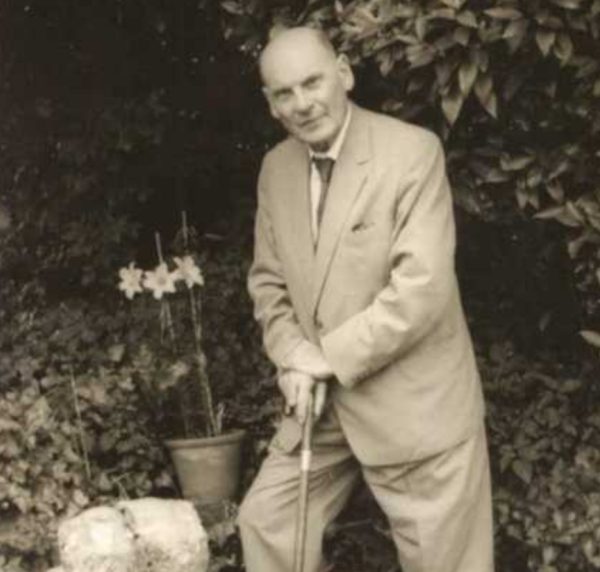
While working with the company Chamberlain, Pole and Co. in Bristol he had a clear vision of himself as a monk in Glastonbury Abbey and so at the age of eighteen he visited and established his life long link with Glastonbury and its environs, first visiting the Chalice Well in the Spring of 1904. Working closely with his sister Kitty and the Allen sisters, Janet and Christine, Tudor Pole then established a link with the blue bowl, which Goodchild had placed in a sluice at Beckery in Glastonbury, after purchasing it in Italy. The bowl was kept in an oratory at their house in Bristol until the outbreak of the first war when it went with Kitty to Letchworth. (for more information see ‘Chalice Well: The Story of a Living Sanctuary’ pages 44-48 (Chalice Well Press 2009) and ‘The Avalonians’ by Patrick Benham chapters 6&7 (Gothic Image 2006)).
As managing director of the flour, grain and cereal merchants who were engaged in Government work, Tudor Pole was exempt from military service but he felt he had to serve and joined the Royal Marines in November 1916. After obtaining a commission he sailed from Plymouth in November 1917, arriving in Egypt soon after.
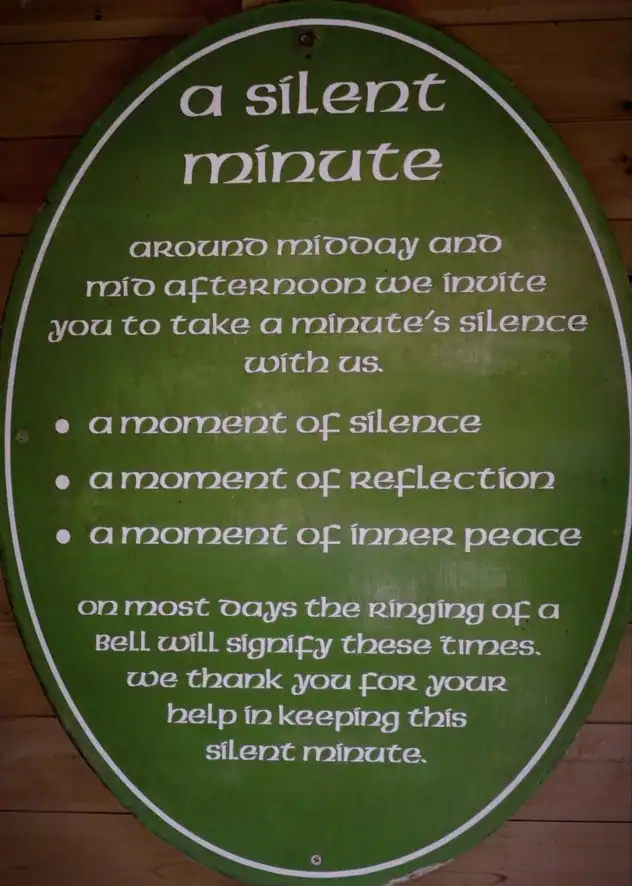
Immediately engaged on the Palestine Front he was wounded on the 3rd December 1917 and taken to hospital in Cairo. The original inspiration for ‘The Silent Minute’ is to be found during the fighting in the mountains around Jerusalem in this brief period. Working out the rest of the war as an Intelligence Officer Tudor Pole was awarded the O.B.E. in the 1919 honours list and was also responsible for the intervention which saved the beleaguered leader of the Bahai faith during the war.
By December 1919 he had established his own firm, W. Tudor Pole and Co. at 61, St. James St. in London, which was to become a hive of business and spiritual activity between the wars with links to New York, Paris, Constantinople, Alexandria, Haifa and Russia. He would never finance or be connected with any business activity unless it was to be of direct benefit to humanity. During this time, as he would continue to do, Tudor Pole produced a considerable literary output which can be summarised as the five books written between 1915 and 1968, three booklets between 1951 and 1961 and nineteen pamphlets between 1906 and 1968.
Through Tudor Pole’s efforts during the second world war the Silent Minute was established with the help of the Government and the B.B.C. from 10th November 1940 as a signal for a minutes silence at 9 p.m. each evening. The practice continued on the B.B.C. until the mid 1950’s but sustains as an act of observance through to this day. As Tudor Pole wrote,
“There is no power on earth that can withstand the united cooperation on spiritual levels of men and women of goodwill everywhere. It is for this reason that the continued and widespread observance of the Silent Minute is of such vital importance in the interest of human welfare.”
Wellesley Tudor Pole 1960

Immediately engaged on the Palestine Front he was wounded on the 3rd December 1917 and taken to hospital in Cairo. The original inspiration for ‘The Silent Minute’ is to be found during the fighting in the mountains around Jerusalem in this brief period. Working out the rest of the war as an Intelligence Officer Tudor Pole was awarded the O.B.E. in the 1919 honours list and was also responsible for the intervention which saved the beleaguered leader of the Bahai faith during the war.
By December 1919 he had established his own firm, W. Tudor Pole and Co. at 61, St. James St. in London, which was to become a hive of business and spiritual activity between the wars with links to New York, Paris, Constantinople, Alexandria, Haifa and Russia. He would never finance or be connected with any business activity unless it was to be of direct benefit to humanity. During this time, as he would continue to do, Tudor Pole produced a considerable literary output which can be summarised as the five books written between 1915 and 1968, three booklets between 1951 and 1961 and nineteen pamphlets between 1906 and 1968.
Through Tudor Pole’s efforts during the second world war the Silent Minute was established with the help of the Government and the B.B.C. from 10th November 1940 as a signal for a minutes silence at 9 p.m. each evening. The practice continued on the B.B.C. until the mid 1950’s but sustains as an act of observance through to this day. As Tudor Pole wrote,
“There is no power on earth that can withstand the united cooperation on spiritual levels of men and women of goodwill everywhere. It is for this reason that the continued and widespread observance of the Silent Minute is of such vital importance in the interest of human welfare.”
Wellesley Tudor Pole 1960
Undoubtedly the creation of The Chalice Well Trust was one of Tudor Pole’s greatest achievements. Alice Buckton had owned and protected the property from 1913-1944 but then it had fallen quietly into private hands again. Fifty-five years after his first visit came the opportunity to purchase the Chalice Well property and to create a Trust to preserve and safeguard it for the public good in perpetuity. The Chalice Well Trust was founded on 1st.January 1959 at a meeting in London with the financial support of some of his associates and friends. For nine years, while living in Hurstpierspoint in west Sussex Tudor Pole was able to guide and anchor the energies required to establish and sustain the Trust, while also bringing through the vision of The Upper Room in Little St. Michaels retreat house.
At the time of his death on September 13th 1968 when “he returned once again to his own plane of spiritual consciousness” one of the then Trustees, Martin Israel, wrote:
“Of the amazing psychic and spiritual gifts of T.P. I need not write. I know that others will be able to furnish specific examples, and his books, notably ‘Private Dowding’, ‘The Silent Road’, ‘A Man Seen Afar’, and his swan-song ‘The Writing On The Ground’ are unique in their portrayal of active seership – as opposed to the passive mediumship bringing down teaching from higher spheres. On a more worldly level I would draw special attention to his normality. As is well known he was a soldier, a businessman, a traveller and a friend of many famous political figures.”
On St. Michael’s Day, 29 September 1968 services in memory of Tudor Pole were taken by Sir George Trevelyan at Chalice Well. Sir George said:
“…that holy spot which T.P. had personally been responsible for saving and redeeming as a place of pilgrimage. His influence for good in our time is probably far greater than any of us can possibly know.”


Undoubtedly the creation of The Chalice Well Trust was one of Tudor Pole’s greatest achievements. Alice Buckton had owned and protected the property from 1913-1944 but then it had fallen quietly into private hands again. Fifty-five years after his first visit came the opportunity to purchase the Chalice Well property and to create a Trust to preserve and safeguard it for the public good in perpetuity. The Chalice Well Trust was founded on 1st.January 1959 at a meeting in London with the financial support of some of his associates and friends. For nine years, while living in Hurstpierspoint in west Sussex Tudor Pole was able to guide and anchor the energies required to establish and sustain the Trust, while also bringing through the vision of The Upper Room in Little St. Michaels retreat house.
At the time of his death on September 13th 1968 when “he returned once again to his own plane of spiritual consciousness” one of the then Trustees, Martin Israel, wrote:
“Of the amazing psychic and spiritual gifts of T.P. I need not write. I know that others will be able to furnish specific examples, and his books, notably ‘Private Dowding’, ‘The Silent Road’, ‘A Man Seen Afar’, and his swan-song ‘The Writing On The Ground’ are unique in their portrayal of active seership – as opposed to the passive mediumship bringing down teaching from higher spheres. On a more worldly level I would draw special attention to his normality. As is well known he was a soldier, a businessman, a traveller and a friend of many famous political figures.”
On St. Michael’s Day, 29 September 1968 services in memory of Tudor Pole were taken by Sir George Trevelyan at Chalice Well. Sir George said:
“…that holy spot which T.P. had personally been responsible for saving and redeeming as a place of pilgrimage. His influence for good in our time is probably far greater than any of us can possibly know.”
Interesting associated sites.
The Albion site was created in 2017-18 by Paul Fletcher and Kevin Redpath from a donation by the Wrekin Trust to the Chalice Well Trust. The site explores the essential ideas contained in British spirituality. It focusses on the central role played by the forerunners such as Wellesley Tudor Pole, Alice Buckton, Ronald Heaver and Dion Fortune and on the emergence of many positive forward thinking organisations. There are many informative links to sacred sites, publications, essays, maps and other interesting websites. It is easy to navigate and has been much praised.
This is an archived site created by Palden Jenkins that contains an online archive of Sir George Trevelyan’s life and work. With copious contributions from many who knew and worked with Sir George it is a complete overview of this fascinating pioneer’s journey from his days of educational innovation at Attingham Park through to his later inspirational work with the Wrekin Trust and his many talks.
This is a more recent site developed after the ending of the Wrekin Trust by friends of Sir George subtitled Awaken your Soul. It is designed to allow the exploration of the life and values of Sir George through his many publications, his ideas and principles and tells us how these values can be brought into the present time for the good of humanity.
(All three sites are administered by the Chalice Well Trust)
Alice Buckton
Alice Buckton was born in Weycombe, Haslemere, on 9 March 1867. She was the eldest of seven daughters of the entomologist George Bowdler Buckton, and his wife Mary Ann Odling. She came to know Alfred Tennyson, who lived nearby, and years later still wore a cloak given her by Tennyson.
As a young woman Alice Buckton was involved with the Women’s University Settlement, which grew out of the work of Octavia Hill. She then became interested in the educational ideas of Friedrich Fröbel, and travelled to Germany to visit the Pestalozzi-Fröbel House. She managed to persuade the Principal there, Annet Schepel, to come to England and help set up a similar institution in London, the Sesame Garden and House for Home Life Training in St John’s Wood. In an 1898 lecture Buckton outlined a plan for this new institution. Buckton emphasised the importance of motherhood in the thought of Pestalozzi and Fröbel, and declared the kindergarten to be part of the “woman’s movement”. Sesame House opened in 1899, with Patrick Geddes on the committee. One woman trained at Sesame House was Lileen Hardy, who went on to open the free kindergarten St. Saviour’s Child Garden in Edinburgh.
By 1902 the school at Sesame House had sixty-five students. Buckton and Schepel were partners who lived together until Schepel’s death in 1931.
In 1908 Buckton became drawn to the Baháʼí Faith after meeting Wellesley Tudor Pole.
In 1912, Buckton bought the Chalice Well in Glastonbury. She and Schepel opened a hostel there which drew pilgrims from around the world, and Buckton continued to live in Glastonbury for the rest of her life.

In August 1913 Buckton stage-managed Caroline Cannon’s Pageant of Gwent at the National Eisteddfod of Wales. The following year she supported an Arthurian festival at Glastonbury, centered around the performance of a music drama by Reginald Buckley, ‘The Birth of Arthur’. She herself wrote and produced The Coming of Bride, first performed in Glastonbury on 6 August 1914. The Coming of the Dawn was written to be produced at Christmas in 1918 by the YWCA.
In 1919 Buckton spoke at a Leisure of the People Conference in Manchester, describing the way in which everyday people in Glastonbury threw themselves into performance of pageant plays. As a result, the University Settlement organized a May festival in Ancoats, for which Buckton wrote an allegorical play around the figures of Labour, Beauty and Joy.
In 1920 Buckton attended a ceremony in celebration of the foundation stone being laid for a theatre in the grounds of Chalice Well, during which she described the theatre as a “another round table,” referring to King Arthur’s round table.
In 1922 she led a team who created the 68 minute film Glastonbury past and Present. The film was said to the first about the history of a town.
In 1925 she wrote a series of six radio sketches based on the Arthurian legends, performed by the Cardiff Station Radio Players with music by Warwick Braithwaite. It was the first play specifically written for radio.
In 1938 she received a civil list pension “in recognition of her services to literature and of the services rendered by her father”
Buckton died on 10 December 1944 at the home of a friend in Vicars’ Close, Wells, Somerset.
A memorial to Buckton was erected in the Church of St John the Baptist, Glastonbury, by Lionel Smithett Lewis.
Ethos
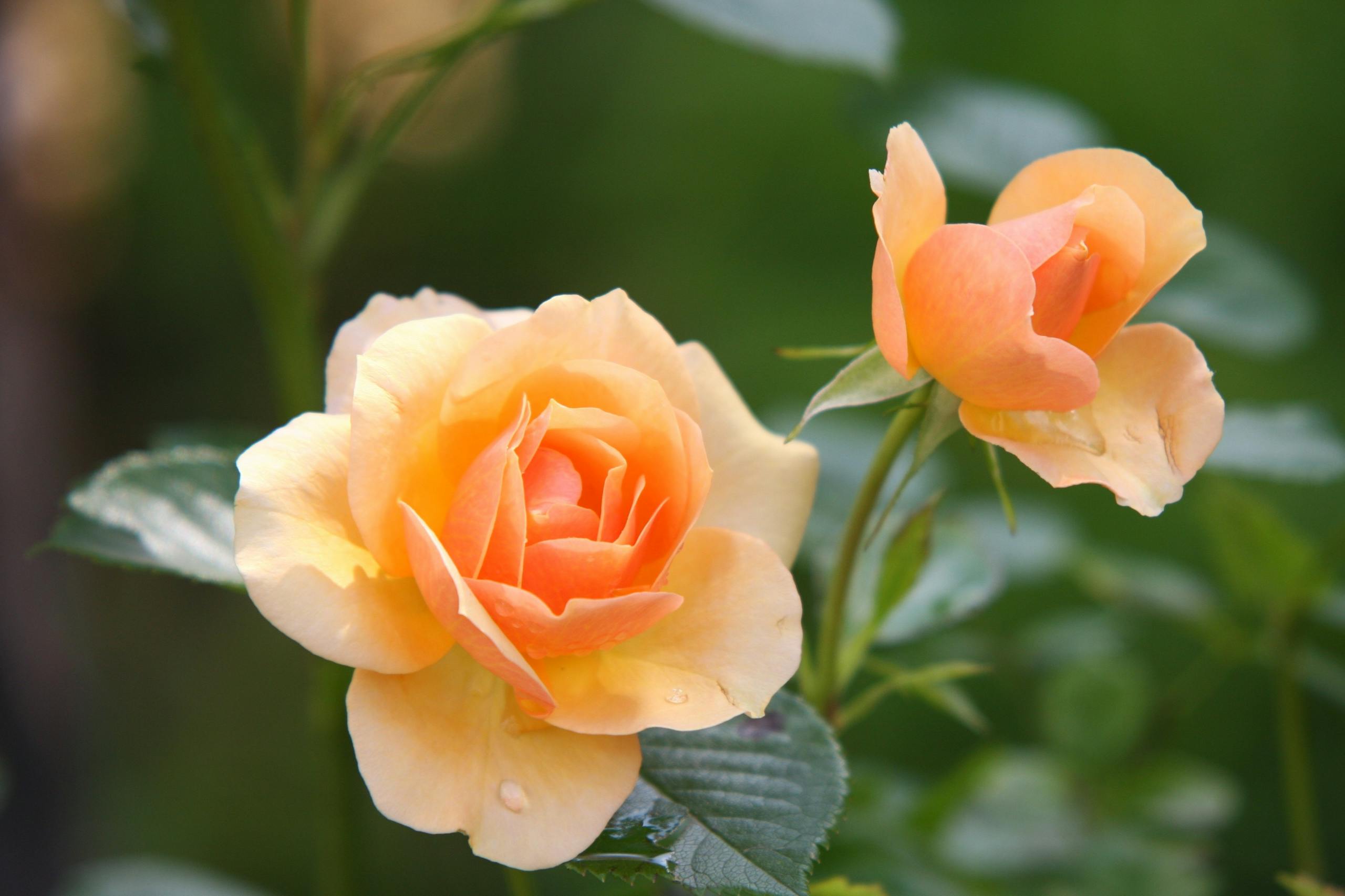
Many Paths, One Source
Chalice Well welcomes pilgrims and visitors of all spiritual paths, faiths and beliefs. We seek to facilitate a connection between people, nature and the spirit of this special place.
Gathering together in our beautiful garden or spending time in our retreat house enables people a shared acknowledgement of the sacred and divine that transcends borders and differences. With the challenges facing the world today, we believe that this has never been more relevant or important.
The Chalice Well Trust was originally founded by Wellesley Tudor Pole in 1959 to ensure that this very ancient Holy Well could continue to be available to all – forever. We are the guardians of the living sanctuary. We ensure its safety and anchor its purpose to ensure that as many people now and in future years can benefit from its positive energies. Our vision is to protect and sustain the Chalice Well as a place of deep resonance for all those who visit, from near and afar, and for all who work or volunteer there, and to work alongside all people of good will and true heart to sustain this sacred place as a beacon of hope throughout the world
Many Paths, One Source
Chalice Well welcomes pilgrims and visitors of all spiritual paths, faiths and beliefs. We seek to facilitate a connection between people, nature and the spirit of this special place.
Gathering together in our beautiful garden or spending time in our retreat house enables people a shared acknowledgement of the sacred and divine that transcends borders and differences. With the challenges facing the world today, we believe that this has never been more relevant or important.
The Chalice Well Trust was originally founded by Wellesley Tudor Pole in 1959 to ensure that this very ancient Holy Well could continue to be available to all – forever. We are the guardians of the living sanctuary. We ensure its safety and anchor its purpose to ensure that as many people now and in future years can benefit from its positive energies. Our vision is to protect and sustain the Chalice Well as a place of deep resonance for all those who visit, from near and afar, and for all who work or volunteer there, and to work alongside all people of good will and true heart to sustain this sacred place as a beacon of hope throughout the world
The Purposes of the Trust are:
- To preserve in perpetuity the property known as the Chalice Well in Glastonbury in the county of Somerset and surrounding lands for the benefit of the public, so that they may for ever have access to this living sanctuary as a place of pilgrimage and rest;
- To preserve and safeguard the said Chalice Well and its surroundings and to beautify them;
- To advance religious and spiritual activities and permit members of the public of all religious and spiritual paths to take advantage of such facilities as the Chalice Well Trust can offer for pilgrimage, quiet contemplation and healing;
- To advance education in all ways by encouraging the study and enjoyment of the sacred through the arts, particularly as may be associated with the said Chalice Well and its surroundings.
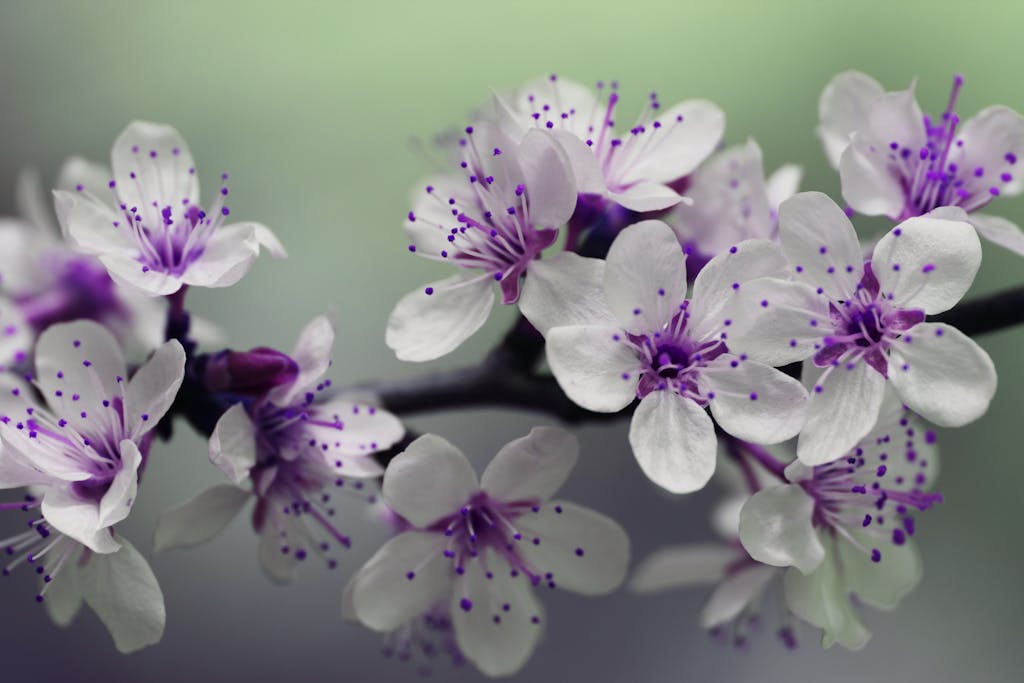

The Purposes of the Trust are:
- To preserve in perpetuity the property known as the Chalice Well in Glastonbury in the county of Somerset and surrounding lands for the benefit of the public, so that they may for ever have access to this living sanctuary as a place of pilgrimage and rest;
- To preserve and safeguard the said Chalice Well and its surroundings and to beautify them;
- To advance religious and spiritual activities and permit members of the public of all religious and spiritual paths to take advantage of such facilities as the Chalice Well Trust can offer for pilgrimage, quiet contemplation and healing;
- To advance education in all ways by encouraging the study and enjoyment of the sacred through the arts, particularly as may be associated with the said Chalice Well and its surroundings.
The Blue Bowl
We thank those who have reached out to the board of Trustees with ideas, concerns and requests regarding the Blue Bowl. These are welcomed and considered. Please be reassured that the Blue Bowl is safe and resides on our sacred land in the heart of the Temenos of Glastonbury-Avalon, from where we can believe it emanates for the good of all.
The decision of the Trustees based on the Chalice Well Trust Blue Bowl Policy, and after risk-assessment, consultation and contemplation, is that the Blue Bowl will remain withdrawn from public access for the time being, as it has been for lengthy periods in its history. This decision will be reviewed regularly.
Wellesley Tudor Pole spoke of the Blue Bowl as a symbol of unity, lasting peace and joy. He believed the bowl to be always active on some level. We invite you to unify your awareness with its subtle energies as you meditate, contemplate, and pray for peace.
With goodwill from Chalice Well.
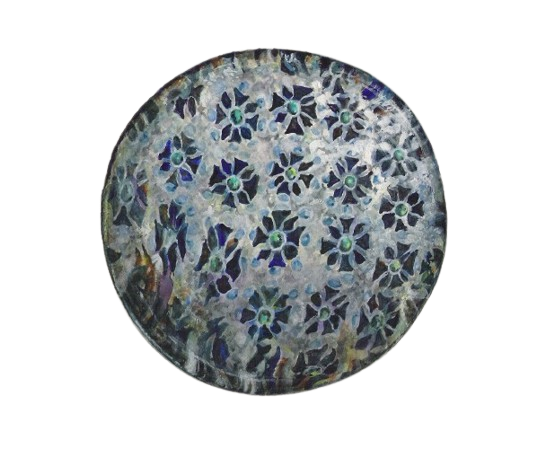
We thank those who have reached out to the board of Trustees with ideas, concerns and requests regarding the Blue Bowl. These are welcomed and considered. Please be reassured that the Blue Bowl is safe and resides on our sacred land in the heart of the Temenos of Glastonbury-Avalon, from where we can believe it emanates for the good of all.
The decision of the Trustees based on the Chalice Well Trust Blue Bowl Policy, and after risk-assessment, consultation and contemplation, is that the Blue Bowl will remain withdrawn from public access for the time being, as it has been for lengthy periods in its history. This decision will be reviewed regularly.
Wellesley Tudor Pole spoke of the Blue Bowl as a symbol of unity, lasting peace and joy. He believed the bowl to be always active on some level. We invite you to unify your awareness with its subtle energies as you meditate, contemplate, and pray for peace.
With goodwill from Chalice Well.

The Sanctuary
Peace and beauty abound. Chalice Well and the main gardens are enfolded in the vale between Chalice Hill and the Tor, enclosed within a Grade 1 listed site.
The Chalice Well is a destination for those seeking, peace, beauty and a refuge from the everyday world. Nestling at the foot of Glastonbury Tor, the site occupies a beautiful and historically important location. The four-acre site consists of beautiful gardens which provide a wonderful relaxing and healing environment thoughout the seasons.
During the warmer months of the year, many visitors will bring picnics to enjoy the peaceful surroundings of the meadow following their progress through the gardens.
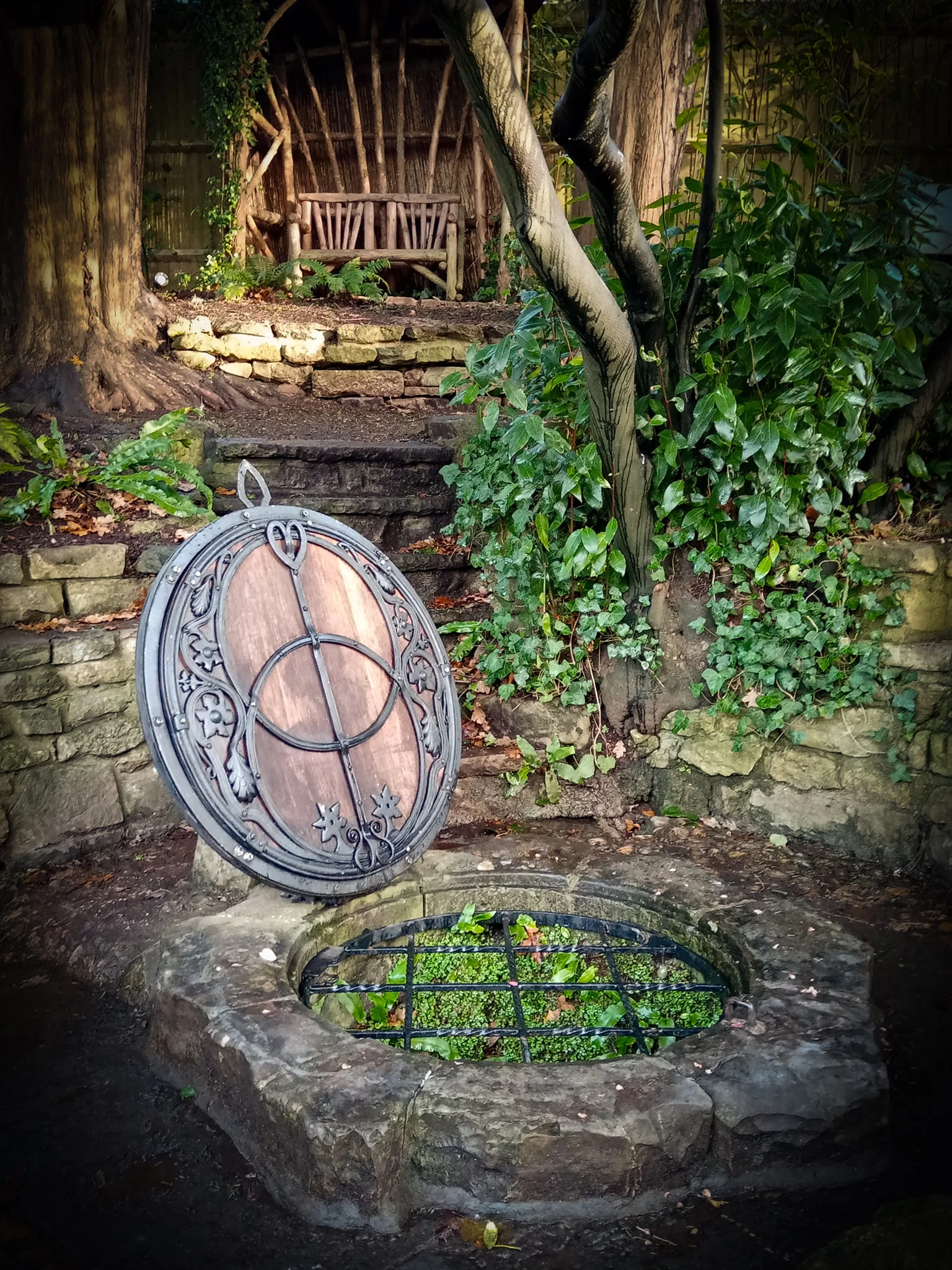
Peace and beauty abound. Chalice Well and the main gardens are enfolded in the vale between Chalice Hill and the Tor, enclosed within a Grade 1 listed site.
The Chalice Well is a destination for those seeking, peace, beauty and a refuge from the everyday world. Nestling at the foot of Glastonbury Tor, the site occupies a beautiful and historically important location. The four-acre site consists of beautiful gardens which provide a wonderful relaxing and healing environment thoughout the seasons.
During the warmer months of the year, many visitors will bring picnics to enjoy the peaceful surroundings of the meadow following their progress through the gardens.
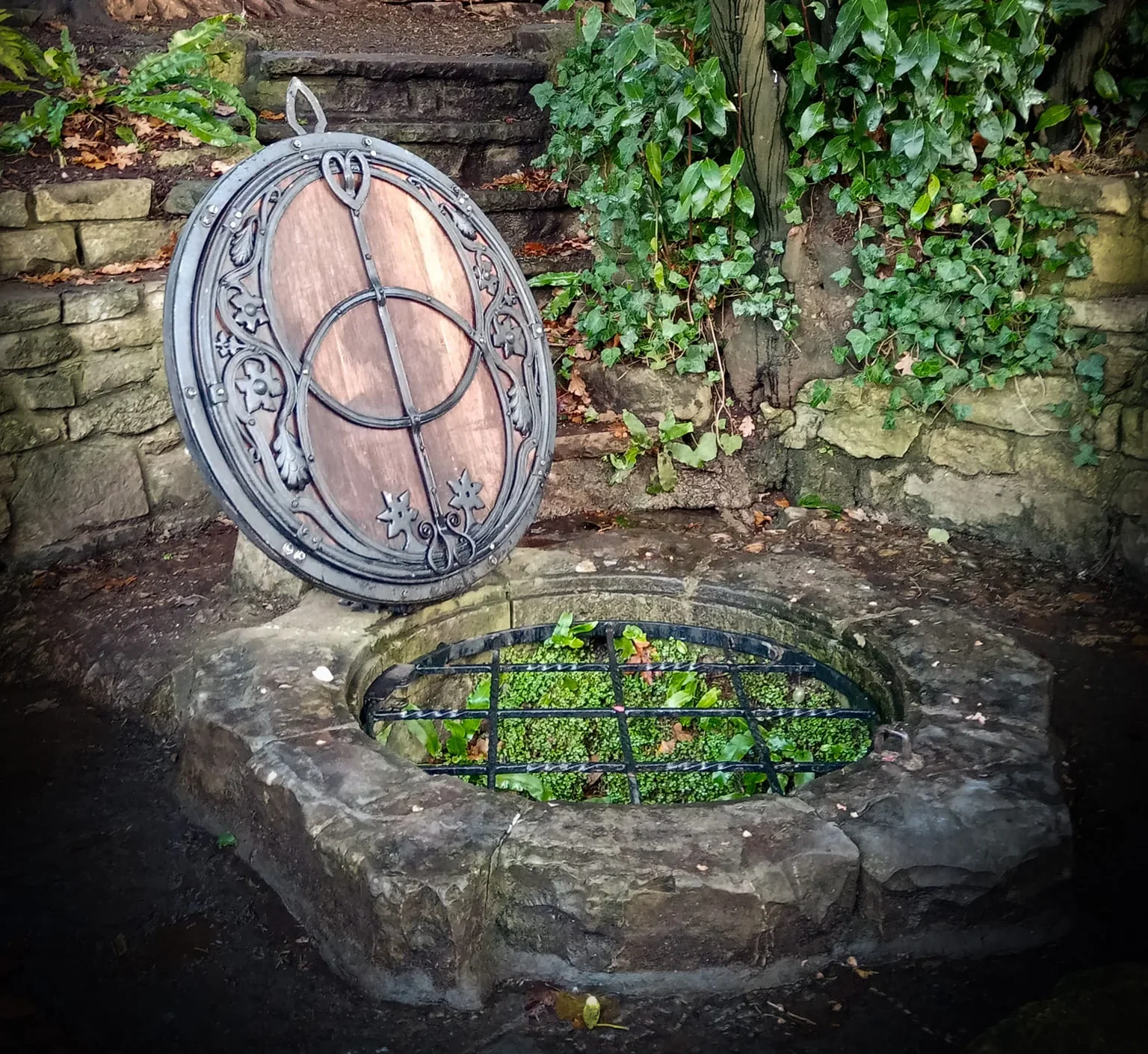
Chalice Well Gardens
Chalice Well Gardens – a living sanctuary and World Peace Garden
The gardens and Well Head provide a place of sublime beauty and peace. Constantly changing with the seasons, but with the endless continuity of the flow of water, the energies and atmosphere provide a welcome and very important break from the bustle of the outside word.
The Vesica Piscis, symbol of the union and dissolution of polarities can be seen throughout the gardens in many forms.
As the ceremonies and gatherings that are held in the garden follow the natural cycle of the seasons, so the gardens serve as a visible reminder keeping all in touch with nature and her rhythms.
‘Beautiful flowers in the borders delight the senses and we can choose to rest and dream at the Angel seat.’
Whilst here, many talk of a heightening of sensory acuity; colours, light, fragrance and sound all serve to create an intensity.
Creating a sensory world with opportunities for experience and relationship underlies the planting philosophy. The choosing of plants is subject not only to the process of intuition but also to the consideration that form, colour and aroma invite the beholder to encounter and connect.
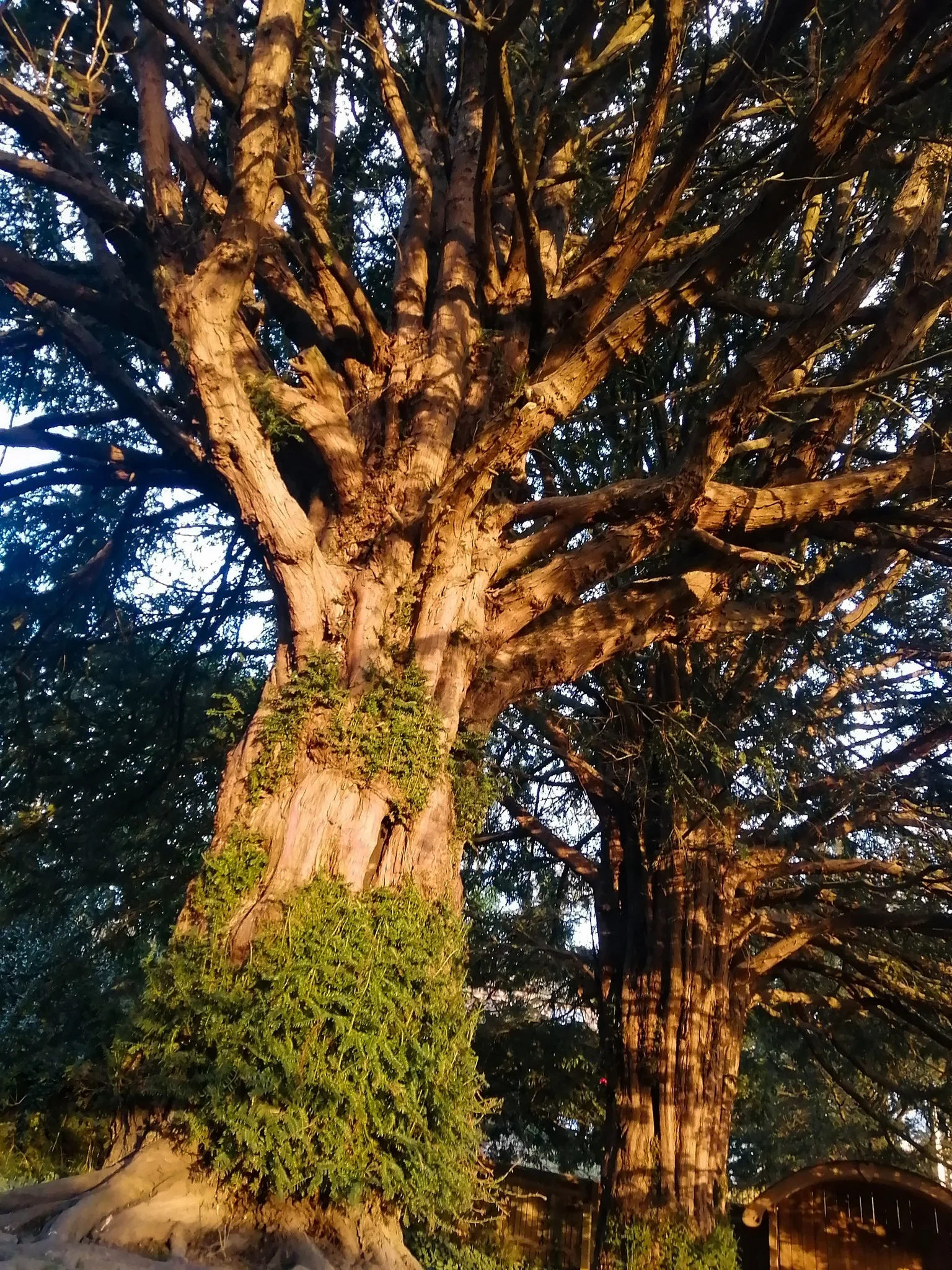
Chalice Well Gardens – a living sanctuary and World Peace Garden
The gardens and Well Head provide a place of sublime beauty and peace. Constantly changing with the seasons, but with the endless continuity of the flow of water, the energies and atmosphere provide a welcome and very important break from the bustle of the outside word.
The Vesica Piscis, symbol of the union and dissolution of polarities can be seen throughout the gardens in many forms.
As the ceremonies and gatherings that are held in the garden follow the natural cycle of the seasons, so the gardens serve as a visible reminder keeping all in touch with nature and her rhythms.
‘Beautiful flowers in the borders delight the senses and we can choose to rest and dream at the Angel seat.’
Whilst here, many talk of a heightening of sensory acuity; colours, light, fragrance and sound all serve to create an intensity.
Creating a sensory world with opportunities for experience and relationship underlies the planting philosophy. The choosing of plants is subject not only to the process of intuition but also to the consideration that form, colour and aroma invite the beholder to encounter and connect.
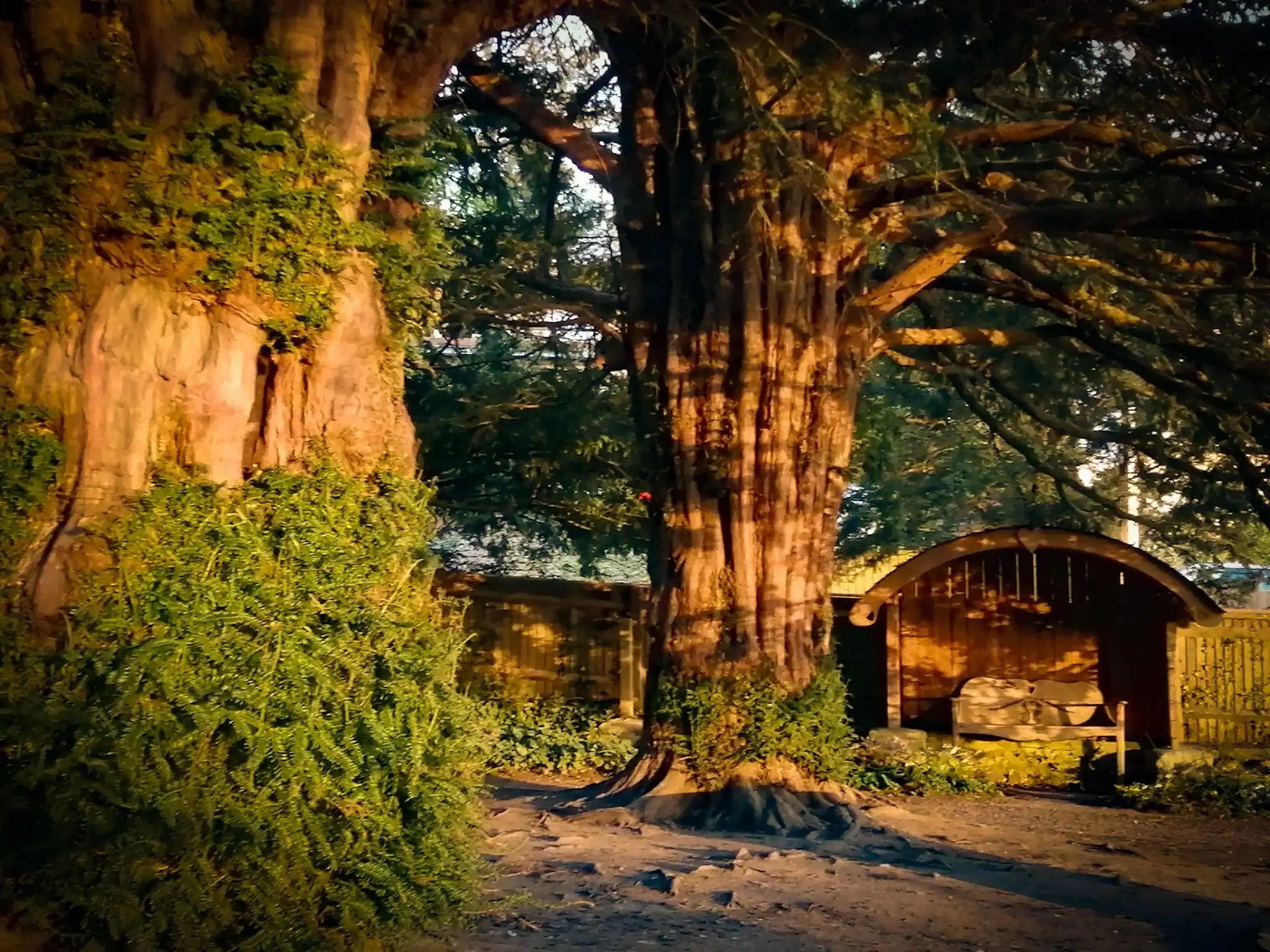
The Retreat House & Meeting Room
Little St. Michaels Retreat House
Available for Companions of the Well to stay in, Little St Michael’s Retreat House is a beautiful Grade II listed house at Chalice Well. Available for individual and group bookings, it is an ideal setting for retreats, pilgrimages and sacred tours.
Staying in our Retreat House offers Companions of Chalice Well a relaxing and inspiring space in the incredibly special environment of the house, and also gives full access to the gardens 24 hours a day.
Little St Michael’s Retreat House, is a place where many paths cross, many faiths converge; a place to share experience, beliefs and personal truth, or a place to simply stop, be still, turn inward into the peace to be found here. Constructed in circa 1600, Little St Michael’s is a beautiful Grade II listed house within the tranquil Chalice Well garden.
Inside the house are simple, homely bedrooms, a quiet relaxing living room and an inspiring esoteric library, a well equipped kitchen and dining area. In the eaves lies the hallowed Upper Room, a holy space kept solely for prayer, reflection and meditation, observing the Silence of this sacred room, envisioned by Wellesley Tudor Pole.
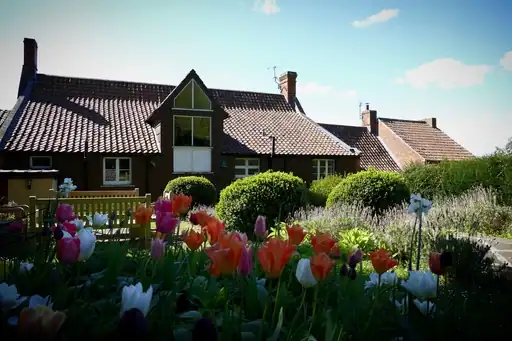
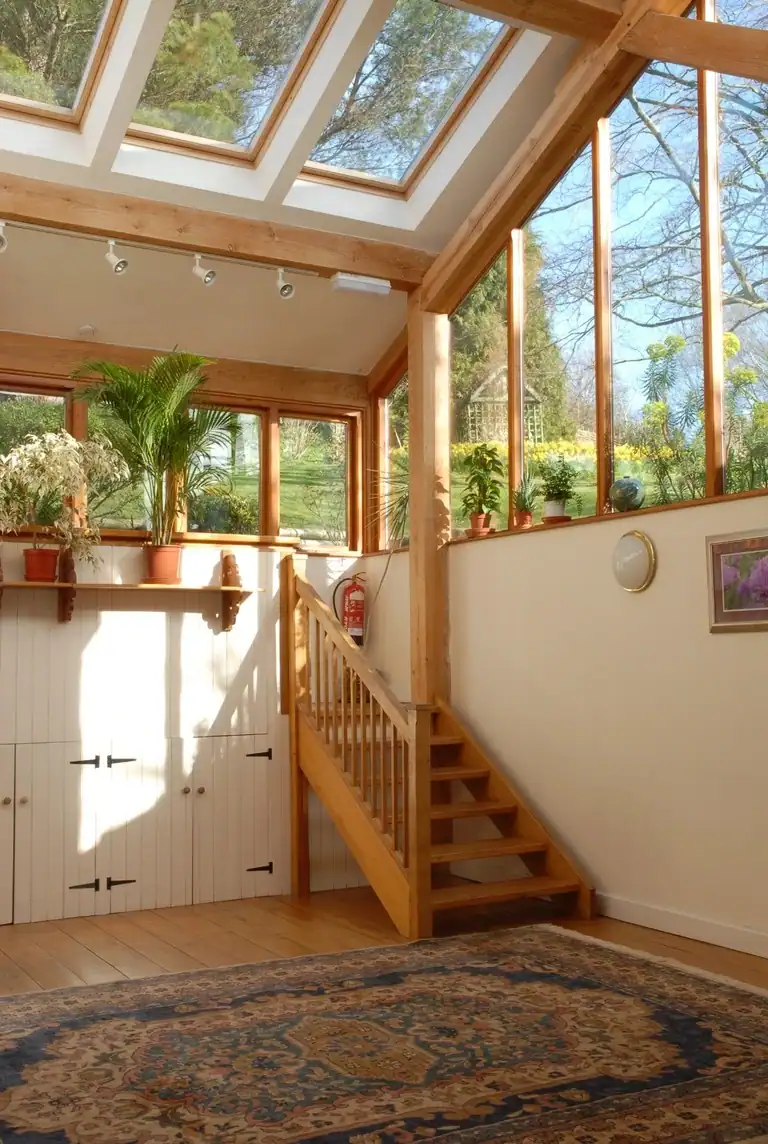
The Meeting Room
Next to our Retreat House, the Meeting Room is a beautiful light and airy space with wonderful views of the garden trees. It is suitable for a range of group activities and can be booked for a full or a half day. Set up for a group seminar, the space can comfortably hold 20 people in a circle and up to 36 people theatre style.
For Meeting Room bookings, you may enjoy the gardens during breaks and for individual contemplation but not for group activities, ceremonies or rituals. If you wish to hold group activities in the garden as part of your workshop, please ask about booking a Private Access.
Little St. Michaels Retreat House
Available for Companions of the Well to stay in, Little St Michael’s Retreat House is a beautiful Grade II listed house at Chalice Well. Available for individual and group bookings, it is an ideal setting for retreats, pilgrimages and sacred tours.
Staying in our Retreat House offers Companions of Chalice Well a relaxing and inspiring space in the incredibly special environment of the house, and also gives full access to the gardens 24 hours a day.
Little St Michael’s Retreat House, is a place where many paths cross, many faiths converge; a place to share experience, beliefs and personal truth, or a place to simply stop, be still, turn inward into the peace to be found here. Constructed in circa 1600, Little St Michael’s is a beautiful Grade II listed house within the tranquil Chalice Well garden.
Inside the house are simple, homely bedrooms, a quiet relaxing living room and an inspiring esoteric library, a well equipped kitchen and dining area. In the eaves lies the hallowed Upper Room, a holy space kept solely for prayer, reflection and meditation, observing the Silence of this sacred room, envisioned by Wellesley Tudor Pole.

The Meeting Room
Next to our Retreat House, the Meeting Room is a beautiful light and airy space with wonderful views of the garden trees. It is suitable for a range of group activities and can be booked for a full or a half day. Set up for a group seminar, the space can comfortably hold 20 people in a circle and up to 36 people theatre style.
For Meeting Room bookings, you may enjoy the gardens during breaks and for individual contemplation but not for group activities, ceremonies or rituals. If you wish to hold group activities in the garden as part of your workshop, please ask about booking a Private Access.

The Shop
The Chalice Well Shop is full of inspiring and beautiful things to help deepen your connection with this living sanctuary.
You are welcome to browse our books, crystals, jewellery, oracle cards, candles, ponchos, flower essences, handmade ceramics, incense, notebooks, journals, gifts and home accessories. We are open every day.
The Chalice Well Shop within the Chalice Well grounds is full of inspiring gifts that carry the vibration of the Well and help deepen a connection with this beautiful living sanctuary. We hope you will find the perfect gift for yourself, friends or family, and you can talk to our friendly and knowledgeable shop team. All our carefully curated gifts are inspired by the energies and love that Chalice Well offers.
Our online shop enables you to buy many of the items available 24 hours a day from wherever you are in the world, with worldwide shipping. Everything we send is packed with care and love from the Well.
Blessings to you from all the Chalice Well Shop team.
Tuesday
Wednesday
Thursday
Friday
Saturday
Sunday
1030 am – 5:30 pm
1030 am – 5:30 pm
1030 am – 5:30 pm
1030 am – 5:30 pm
1030 am – 5:30 pm
1030 am – 5:30 pm
Tuesday
Wednesday
Thursday
Friday
Saturday
Sunday
10 am – 4 pm
10 am – 4 pm
10 am – 4 pm
10 am – 4 pm
10 am – 4 pm
10 am – 4 pm
- 25 & 26 December
- 1 January
The Chalice Well Shop is full of inspiring and beautiful things to help deepen your connection with this living sanctuary.
You are welcome to browse our books, crystals, jewellery, oracle cards, candles, ponchos, flower essences, handmade ceramics, incense, notebooks, journals, gifts and home accessories. We are open every day.
The Chalice Well Shop within the Chalice Well grounds is full of inspiring gifts that carry the vibration of the Well and help deepen a connection with this beautiful living sanctuary. We hope you will find the perfect gift for yourself, friends or family, and you can talk to our friendly and knowledgeable shop team. All our carefully curated gifts are inspired by the energies and love that Chalice Well offers.
Our online shop enables you to buy many of the items available 24 hours a day from wherever you are in the world, with worldwide shipping. Everything we send is packed with care and love from the Well.
Blessings to you from all the Chalice Well Shop team.
- 25 & 26 December
- 1 January
